What does Cabochon mean?
A cabochon gemstone features a polished domed surface in contrast to a faceted cut. Rather than sparkle, the rounded cut captivates by enhancing colour, reflection or translucence over a domed surface.
The term Cabochon features regularly in jewellery design. We pronounce the word: Kab-Uh-Shon.
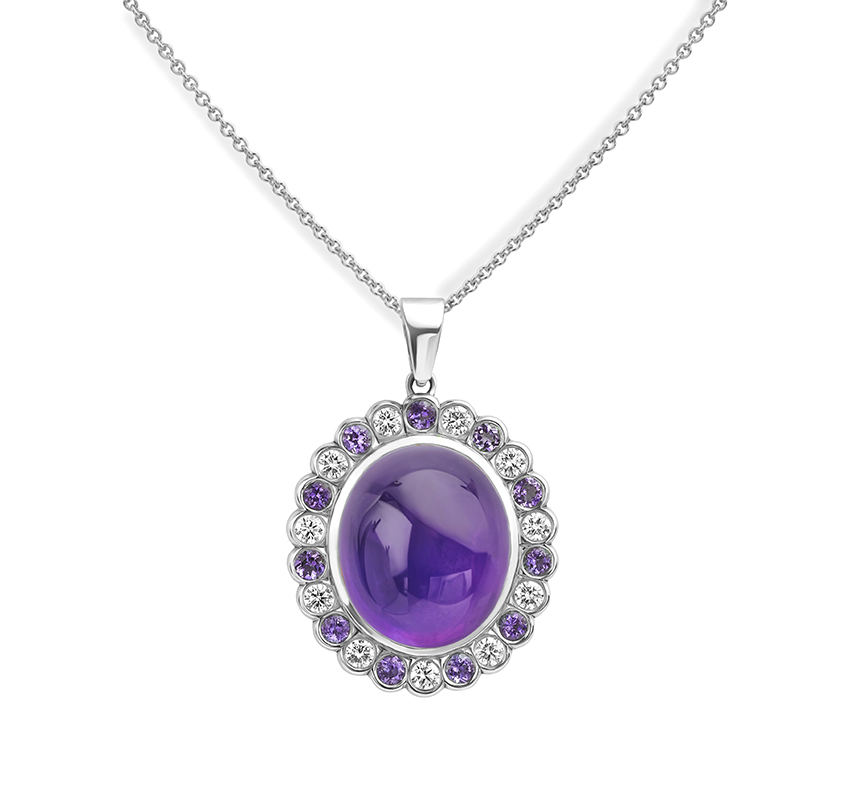
Where does the word come from?
The word originates from the French word Caboche meaning head. This explains the rounded shape exhibited by all such gems.
This cut of a diamond has been found across jewellery dating back to the Ming Dynasty and across other ancient cultures, including examples from the ancient civilisation of Egypt. Polishing such stones as Sapphire, Emeralds and Rubies, provided deep pools of vibrant colour to the jewellery of Royalty, such as those seen on the Crown of Ottonian Empress Kunigunde, from Germany, featuring raised Cabochons set on arcaded panels.
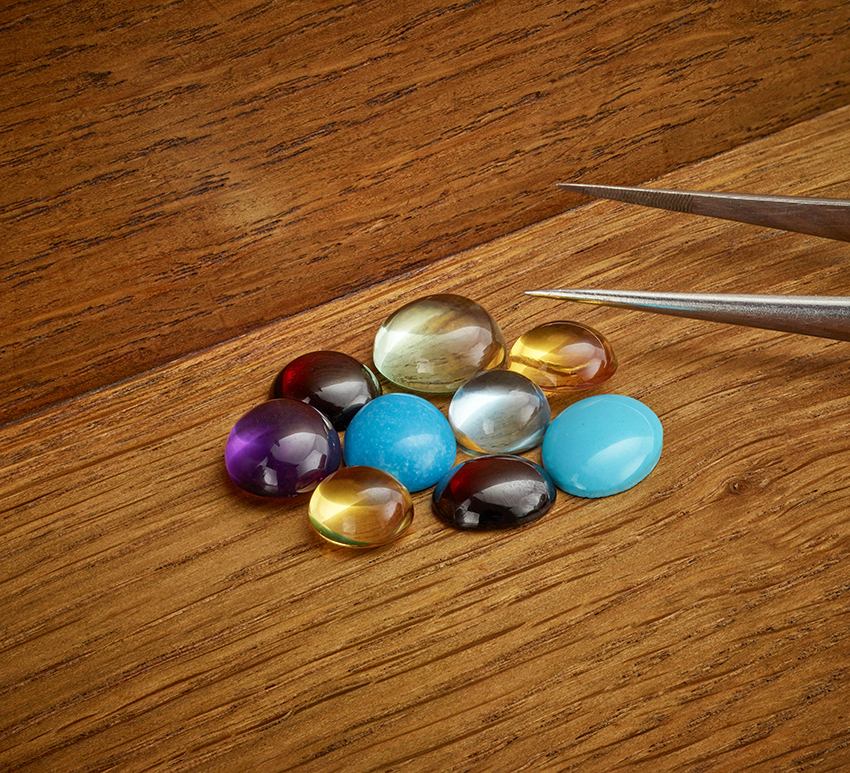
The dictionary definition describes a precious stone of convex hemispherical or oval form, polished but not cut into facets.
Do gems have flat or curved bases?
Simply put, this style of gemstone can feature either a flat base or a curved base. For this reason, some gemstones suit flat settings, held in place by adhesive or a bezel setting. Flat plate-like settings often suit flat-based gems owing to the greater surface area for adhering the gem.
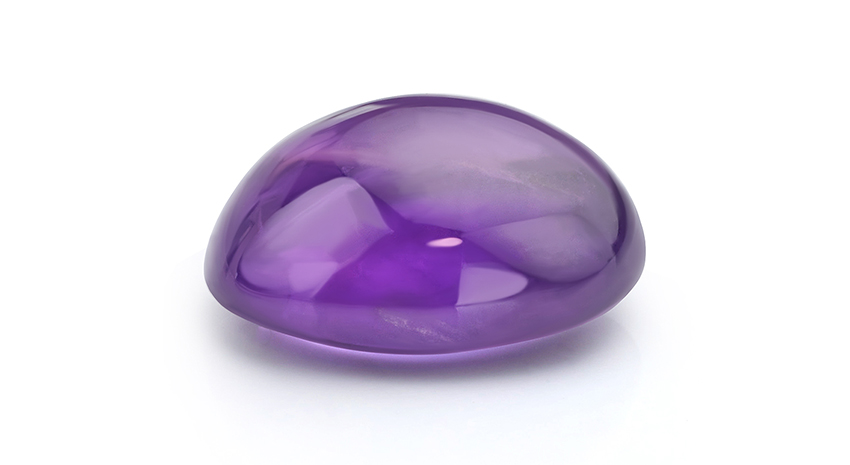
Some jewellery designs require a flat base to attach the gem, whereas other styles allow for a deeper, rounded base. As an example, the following cabochon Amethyst features a curved base. This adds depth to the gemstone and provides an increased depth of colour due to the depth of the gemstone.
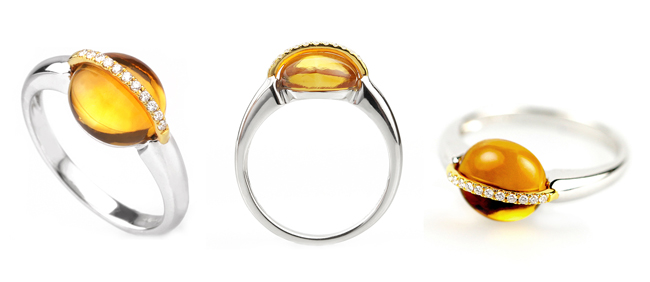
What is a Cabochon gemstone?
For this reason, we’ve put together a few words to keep things simple. Hopefully, this will give a little insight into this beautiful cut of the gemstone.
Types of Cabochon Gemstones
Many types of gemstones feature in this distinctive style of gemstone cut. We rarely cut diamonds in this way, as the true beauty of a diamond is exposed through careful faceting of the surface, which works with finely balanced proportions.
Cabochon cuts often vary in depth and proportions. For example, flatter styles exist with a shallow dome. In contrast, rounded, high-domed gemstones exist with a greater depth.
Many examples feature a flat base for ease of setting this gemstone cut. This cutting style is a popular choice for transparent, opaque, and semi-opaque gemstones, offering a unique variation in the flash of light created by faceting the gemstone.
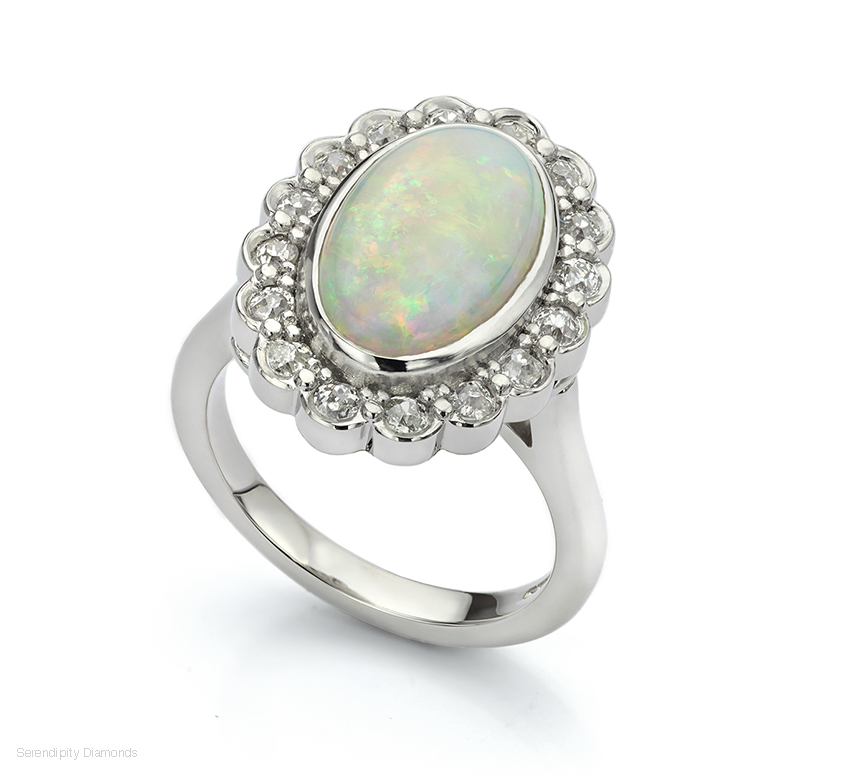
Cabochon Opal and diamond ring, remodelled from an heirloom ring.
Alternative names for rounded gems
There are many descriptive names. For example, Low Dome, High Dome, Cone, Bullet and Double Bevel. Also, Hollow, Carbuncle, Double, Flat Cut, Slab and Buff Top. In addition, many jewellers shorten the name to just “Cab” when talking to colleagues.
Ring styles
Cab gemstones suit many ring styles. For example, Dress Rings. Other styles include Signet rings for both men and women. A domed gemstone suits a bezel setting on the face of a signet ring. Furthermore, the polished surface of the ring helps to reflect light back through a translucent gem.
What about cabochon diamonds?
Dome-polished diamonds don’t tend to exist for a very specific reason. The allure of diamonds comes from their refractive and reflective qualities. Such qualities are enhanced through shaping the diamond. Specific proportions and faceting styles result in the sparkle that diamonds are famous for. The shape would destroy all such life from the diamond. Coloured gemstones lend themselves well to the domed style owing to their depth of colour.
Do Cabochon Sapphires exist?
Cabochon sapphires offer durability and a unique variation on the faceted gemstones commonly found in jewellery. Domed Sapphires exist in many shapes and sizes. Also, they exist in many colours, including blue, pink, green, yellow, orange and peach.
The following example features a circular domed shape with a flatter underside, perfect for a bezel setting in a ring.
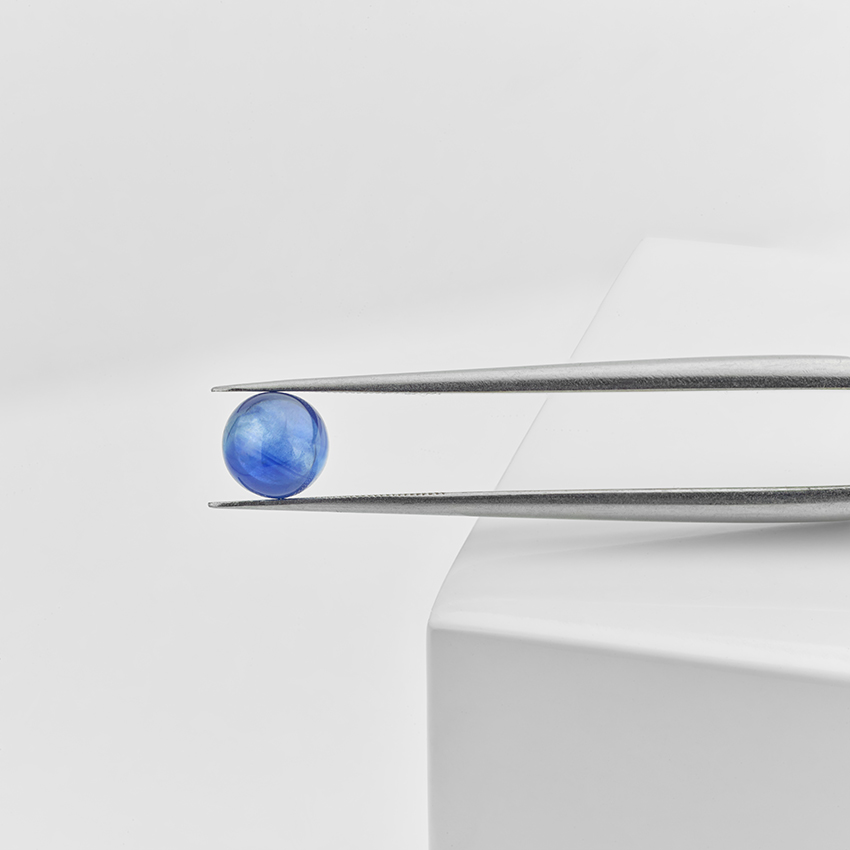
Many gemstones used in jewellery feature a flatter base to improve the way they sit in the design. At the same time, the flatter base minimises the height at which the gem stands from the jewellery. For instance, rings become more exposed to damage if they protrude too much.
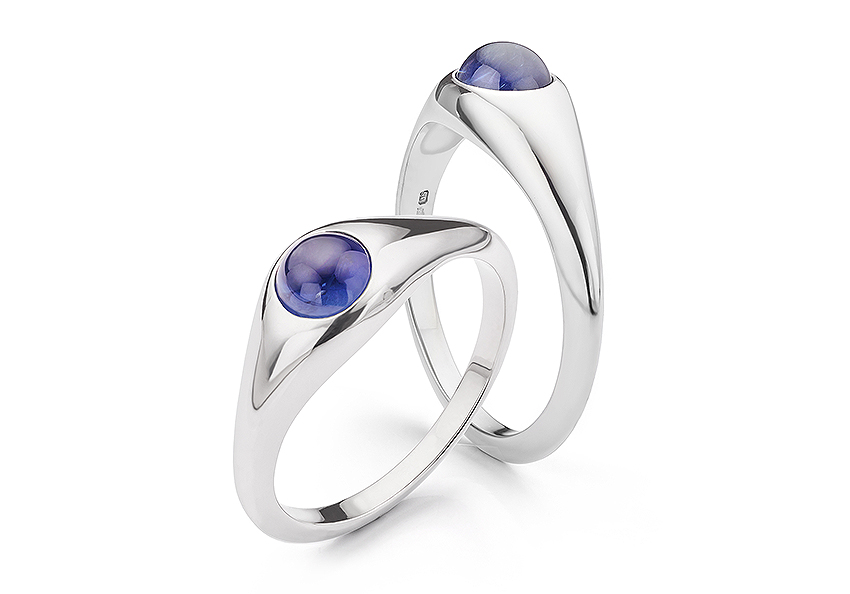
Cabochon engagement rings
This gemstone style appears in many engagement rings and contrasts with the traditional ‘faceted’ diamond engagement ring. Interestingly, many ring styles feature a combination of both gemstone cuts. Over the years, our bespoke design team has worked with clients all over the world to create ring designs set with every style, size, shape, and variety of gemstone.
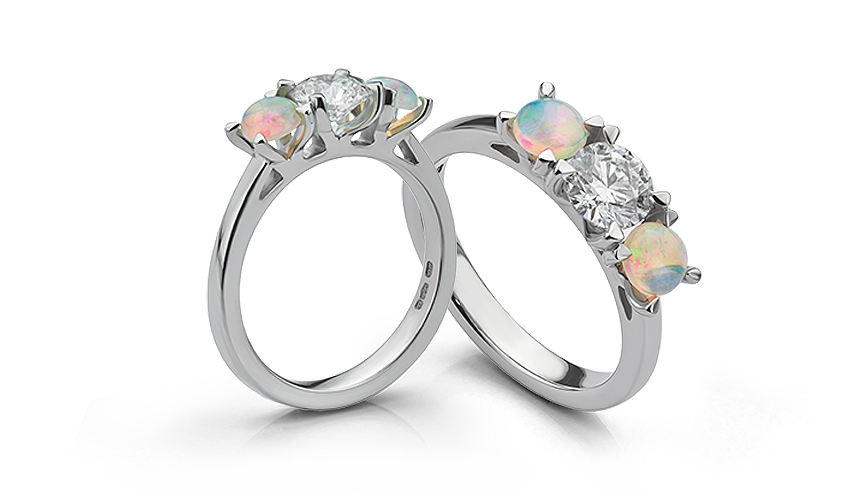
One of our recent cabochon engagement rings featured a unique variation of diamond and opal, set into a Trilogy-style ring design. Rather than setting an opal as the centre stone, our client decided on two opals on either side of a lab-grown diamond with incredible results.
How to choose the perfect gemstone for your ring
As part of our service, we regularly source selections of gemstones for clients. Some clients choose to visit our showroom. In contrast, many of our clients who live further away benefit from photographs of potential gemstones. For example, we provided a selection of Cabochon Moss Agate oval gems for our client to choose from for a bespoke Moss Agate engagement ring.
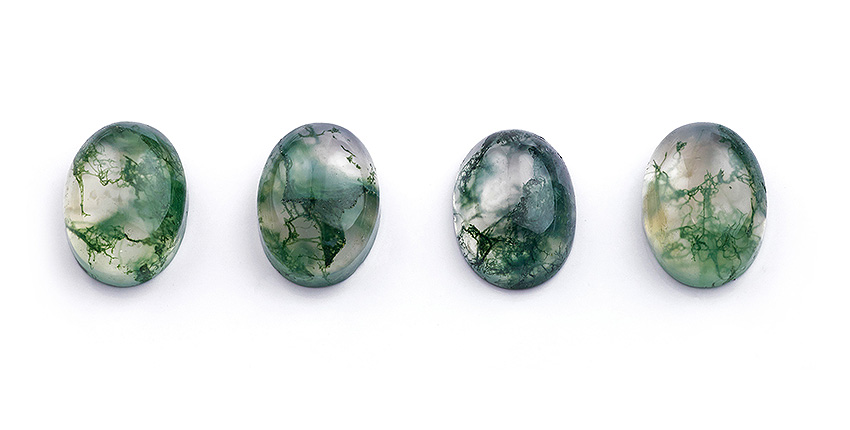
The combination of CAD design for the ring and detailed photographs of the gemstone ensures that each client can visualise the final ring before we begin any work.
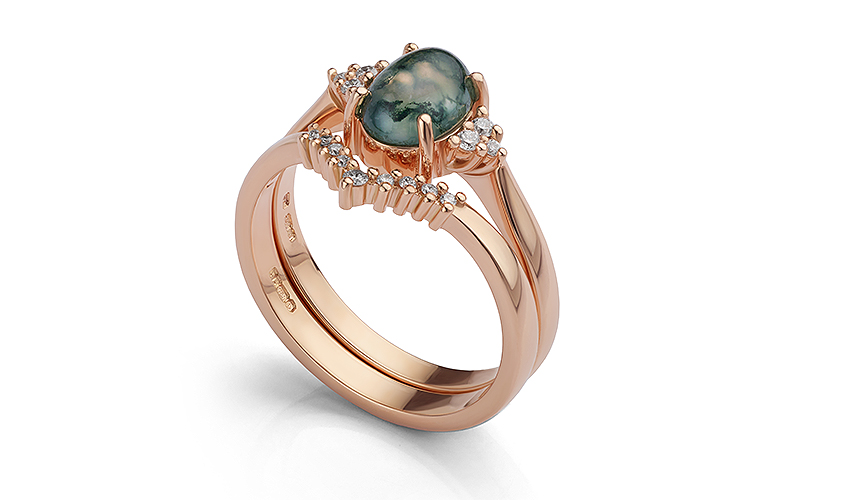
Mixing diamonds with Cabochon gems
As part of the same engagement ring commission, we complemented the ring design with extra sparkle from ethical lab-grown diamonds. Both gemstone cuts uniquely reflect light. The moss agate provides interest with detailed, organic filaments. At the same time, diamonds catch the eye with their mesmerising dazzle. In addition, we added graduating sizes of diamonds, claw-set within a wishbone-shaped wedding ring.
About Mark Johnson
My name is Mark and I'm founder at Serendipity Diamonds. I have 30 years or experience in polished diamonds and jewellery. Today, I work with an expert team in our Isle of Wight jewellery showroom located in Ryde. Most of my work involves helping clients in our showroom, working on our two websites and photographing jewellery commissions.



